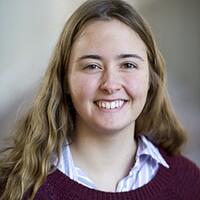LISA Pathfinder mission: Hunting for gravitational waves in space
Loading...
Scientists announced on Tuesday that they have engineered a jumping-off point for .
The European Space Administration launched its Laser Interferometer Space Antenna (LISA Pathfinder) last December to pave the way for a future LISA mission that could achieve the precise measurements and still conditions necessary to measure gravitational waves.
"With LISA Pathfinder, we have created the ,” said Max Planck Institute for Gravitational Physics director Karsten Danzmann in a statement. “Its performance is spectacular and exceeds all our expectations by far.”
Gravitational waves have received much attention since they were first detected in February this year. Their detection confirmed one of the predictions of Albert Einstein’s 100 year old , and triggered a wave of interest in the global scientific community.
In short, gravitational waves are created when massive cosmic events occur (think exploding suns or black holes colliding). These produce distortions of spacetime that ripple outward, and are very difficult to measure.
That is where the LISA Pathfinder and its successors come in. Scientists have called the LISA Pathfinder “the quietest place in the universe.” By eliminating all outside sources of gravitational “noise,” scientists hope to be able to measure gravitational waves.
The LISA Pathfinder craft reached a gravitationally stable point, Lagrange Point 1, in January. In March, it began looking for the perfect position for gravitational wave detection.
Inside the LISA Pathfinder are two tiny gravitational wave indicators – two 4.6 centimeter gold-platinum cubes. They’re in free fall, and are almost perfectly still. Using these cubes, scientists can measure gravitational waves as they pass through the LISA Pathfinder.
"We can determine the distance of the two free-falling test masses to less than the diameter of a single atom," said Gerhard Heinzel, leader of the Interferometry in Space research group at the Max Planck Institute for Gravitational Physics, in a statement.
Future detectors will likely be farther apart than these tiny cubes, which are separated by just 38 centimeters, but the test cubes have demonstrated that humans can engineer the extraordinarily precise measurements and stability needed for this or any subsequent mission.
The ESA hopes to launch a full capacity LISA mission by 2034. The current plan is to arrange three spacecraft in a triangle, with each spacecraft carrying tiny free-falling cubes. Laser measurements of the distance between these cubes will help scientists study gravitational waves.
"[These] experiments firmly establish that the precision needed by LISA for measuring test-mass displacements are well in hand,” said David Reitze, the executive director of the Laser Interferometer Gravitational-Wave Observatory (LIGO), ”setting the stage for the next era in gravitational-wave detectors."
Others echoed Dr. Reitze’s statement.
“We’ve now to a LISA-like mission,” said Paul McNamara, LISA’s project scientist, in a statement. “The technology we need is no longer black magic; it’s reality.”





